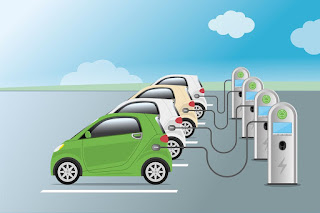Why Is the Uptake of Electric Vehicles So Slow?
There has been a lot of talk about electric
vehicles over the past few years. They were supposed to have stormed the roads
and reduced emissions so we could tackle this climate change problem we have on
our hands. But, so far there has been noticeably little action in the world of
electric vehicles. The streets are not flooded with them and charging points
around big cities are few and far between.
What is keeping us from embracing electric
vehicles when we know the benefits they offer? The key selling point of the
electric vehicle is the fact that it emits zero emissions. This has a positive
knock on effect on the air quality and the environment as a whole. On top of
this, electric vehicles are generally cheaper to run and maintain, although the
initial cost may be more than a traditional car. In the long run, these cars
will help us save money. They are even quieter than regular cars! So, what’s
the deal?
Unfortunately, there are still some
drawbacks when it comes to electric vehicles that are making individuals
hesitant to take the plunge and make the investment. One of the most pressing
concerns is the range of the electric vehicle. A full charge will not take cars
nearly as far as a full tank of petrol and this worries drivers. What if the
car runs out of battery and there is no charging port nearby? While cities are
installing infrastructure for electric vehicles, the work is far from complete.
Currently, there is not enough security for drivers that they will be able to
make it from A to B and charge up on the way. This insecurity also leads to
increased insurance premiums, as there is a higher risk of breaking down in a
remote spot.
Another disadvantage of electric vehicles
is that on the whole they are less powerful than traditional cars. This can make
highway driving a challenge, especially when smaller cars will struggle even to
reach 70mph. Thus, individuals are reluctant to be pioneers and start buying
electric vehicles until there are more of them on the road and they know more
about them.
What can be done to get traditional cars
out of circulation faster? The first step, according to experts, is for the
government to adopt electric vehicles wherever they can. Replacing traditional
buses with electric equivalents and passing legislation requiring taxis to be
electric is a possible place to start. Once our public transport is green, we
will already be making a big difference to the environment. Plus, this might
encourage more people to buy electric vehicles.
Other incentives could include trade-in
deals or other ways of subsidising the purchase of a new electric vehicle. In
the UK, the government aims for 100% of new cars bought after 2040 to be
electric. Currently, it is looking like by 2020 only 3-7% of new vehicles
purchased will be electric so the nation has a long way to go, but the ambition
is positive.
In the past, the adoption of new technology
has always followed the same trend. Things start out slowly as innovators and
early adopters start to use said new product. Then, the technology takes off
and we see a steep increase in adoption until it eventually reaches saturation
point. Let’s just wait and see if electric vehicles will follow the same curve.




Comments
Post a Comment